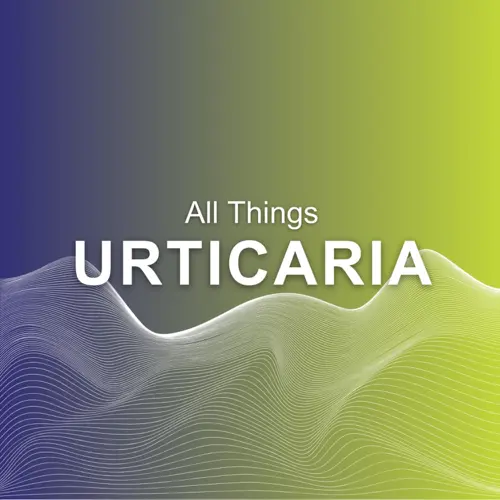
All Things Urticaria – Learning about urticaria with Prof. Dr. Torsten Zuberbier
Urticaria in Children: Diagnosis, Triggers & Treatment
In this episode, Prof. Torsten Zuberbier welcomes Dr. Larissa Brandão, pediatric allergist from the Federal University of São Paulo, Brazil, to talk about chronic urticaria in children — a condition that is often misunderstood and underdiagnosed.
🔹 When does chronic urticaria typically begin in kids?
🔹 What role do infections or allergens, play?
🔹 Which treatments are available in public healthcare?
🔹 How do cold urticaria and cholinergic urticaria show up in warm climates?
Dr. Brandão shares her clinical experience from Brazil, where many children with chronic urticaria also suffer from comorbidities like asthma and allergic rhinitis. She explains how treatment responses differ from adults and discusses the impact of restricted access to second-generation antihistamines.
Join us for a practical and global look at what it takes to recognize, treat, and support children with chronic urticaria — especially in resource-limited settings.
Key Learnings from the Episode
Chronic urticaria in children typically begins around age 7–8, with chronic spontaneous urticaria (CSU) being the most common subtype.
In Brazil is the most common chronic inducible form; cold urticaria and cholinergic urticaria are also present but less frequent.
Cold triggers in Brazil include ice cream, cold drinks, pools, and beaches — not ambient winter weather.
Pediatric CSU patients often have comorbid atopic conditions, especially asthma and allergic rhinitis.
Children tend to respond better than adults to standard or up-dosed second-generation antihistamines, but fatigue can be a common side effect.
Loratadine is the only antihistamine widely available through Brazil’s public health system; desloratadine, bilastine, or fexofenadine are often unaffordable.
Liver function monitoring is used for kids on high-dose loratadine.
Omalizumab is rarely needed, but effective in more severe pediatric cases — especially those with comorbid asthma.
Dupilumab is now licensed in Brazil for CSU in children aged 12+, and early reports show benefits for patients with both asthma and urticaria.
Pseudoallergen-triggered symptoms (e.g. from candy, dyes, preservatives) are observed, and short-term elimination diets are used diagnostically.
Cold urticaria can cause anaphylaxis, especially in pools — and adrenaline auto-injectors are recommended for high-risk children.
Counseling on safety, including family education about temperature triggers, is essential for cold urticaria management.
Brazilian UCARE centers use social media and in-clinic education to raise awareness and prepare for Urticaria Day (October 1) each year.
Chapters
00:00 Introduction to Urticaria in Children
01:46 Understanding Chronic Urticaria in Children
03:33 Infections and Chronic Urticaria
05:13 Allergic Comorbidities in Children
06:27 Treatment Algorithms for Chronic Urticaria
08:32 Dietary Influences on Urticaria
12:09 Cold Urticaria and Safety Concerns
15:13 Advancements in Urticaria Treatment
17:30 Advocacy and Awareness for Urticaria
Do you have suggestions for future episodes? Please provide feedback and offer your suggestions for future topics and expert selection here.
Feedback form:
ATU: https://forms.office.com/e/m6a2uEdsUH